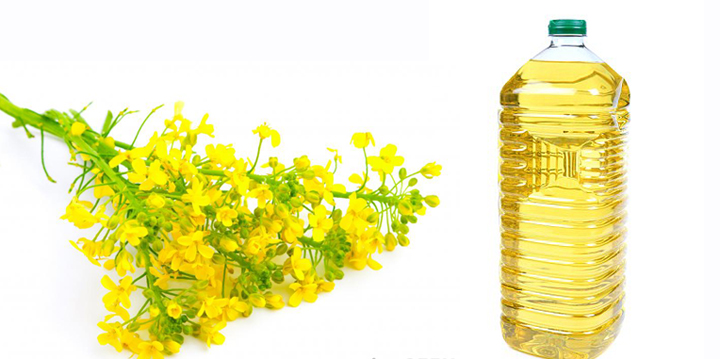It turns out that despite the media hype rapeseed oil is not such a healthy product for cooking and salad dressing. But before we find out why, let’s learn more about its production.

Rapeseed – what is it?
Rapeseed oil is derived from the rapeseed plant. As early as the 1970s Canadian scientists from the Manitoba University, using natural methods of growing, created a new type of rapeseed in an attempt to reduce the glucosinolates and erucic acid, which are naturally occurring in the plant and considered toxic. Exactly this type of hybrid rapeseed is used for the production of what we already know and consume as rapeseed oil.
Rapeseed oil is often proclaimed as the healthiest of all edible oil types because it has low content of saturated fats and at the same time high content of monounsaturated fatty acids (such as oleic acid) and polyunsaturated fatty acids (Omega-3).
From rapeseed to rapeseed oil In order to turn the hybrid rapeseed into rapeseed oil producers first heat the seeds slightly and then subject them to pressure to extract the oil from them.
So far so good, right? If the process ends here we would be happy.
Unfortunately more is needed to produce rapeseed oil.
Almost every rapeseed oil sold in food stores is refined using hexane, a chemical considered to be a relatively safe solvent. But that’s the tip of the iceberg - the last step in the rapeseed oil production includes bleaching and elimination of unpleasant odour, for which purpose high temperature is used.
The problem is that the Omega-3 fatty acids which are naturally occurring in the rapeseed oil cannot withstand this high temperature and start emitting a very unpleasant odour. The process of eliminating the unpleasant odour, in turn, transforms the Omega-3 acids into unhealthy trans fats.
And while rapeseed oil is proclaimed to be healthy and safe for use, the production process which destroys the useful fats in the seed and uses “relatively safe” chemical solvents, does not seem safe at all.
Knowing how rapeseed oil is produced should at least cast doubt on the claim that it is the safest cooking oil.
What happens when we cook with rapeseed oil?
The fame of rapeseed oil probably came from the fact that saturated fats were proclaimed as very harmful for the human health. Being an oil with a low content of saturated fats, the rapeseed oil was the magic solution for those who wanted a low-fat diet.
One of the main problems with rapeseed oil consumption is that it may disturb the ratio between Omega-3 and Omega-6, which, ideally, should be 1:1.
Contrary to what producers claim, rapeseed oil is not rich in Omega-3 at all. And when you heat it to cook food at home, a big part of the small amount of Omega-3 fatty acids in it is destroyed.
As a result, being totally unaware of it, you supply your body with oxidised cholesterol and trans fats.
You can also find rapeseed oil as an ingredient in many processed foods you buy from the supermarket.
Many food producers use hydrogenated rapeseed oil to extend as much as possible the shelf life of their products. Maybe some people will find it a wonderful idea to store foods that will last longer in the storeroom but they should be aware that their body will absorb all these trans fats.
The best scenario for you is to rid your diet of rapeseed oil and replace it with organic coconut oil, which is indeed the healthiest cooking oil because it is produced from Mother Nature itself. Unlike rapeseed oil, coconut oil can withstand high temperatures during cooking without becoming harmful or oxidising into unhealthy trans fats.












LEAVE A COMMENT :
Comments sort : Newest / Oldest / Most Upvoted